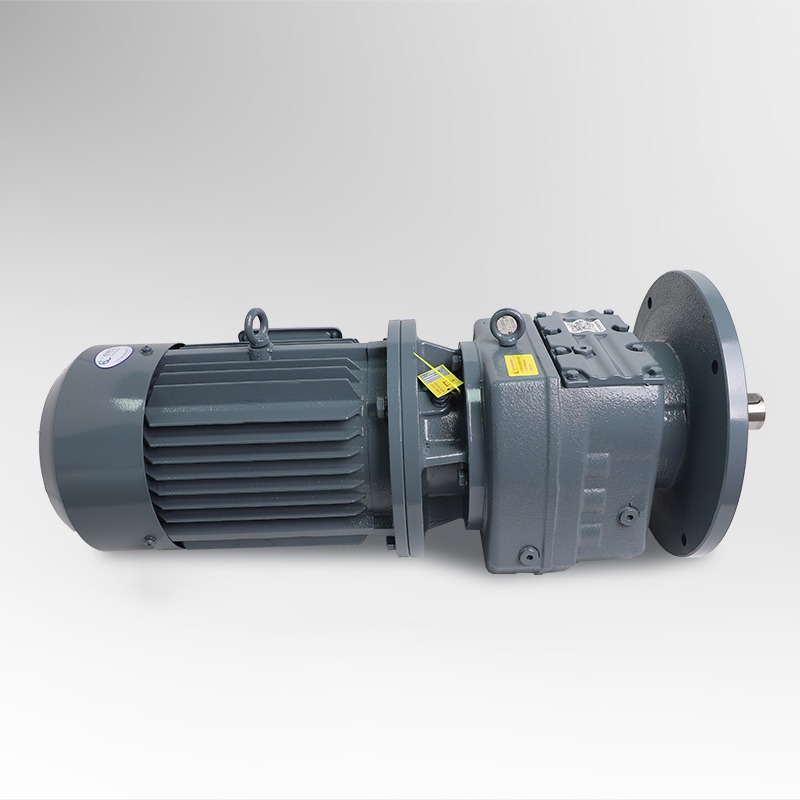 2025.08.18
2025.08.18
 Industry News
Industry News
In the intricate world of modern water treatment, flocculation stands as a pivotal process. It involves introducing chemical coagulants into water to encourage suspended solids and colloidal particles to clump together, forming larger, more manageable flocs that can be easily removed through subsequent sedimentation or filtration. For this process to be effective, mixing is an absolutely essential component. The operation of a flocculation mixer is not a simple agitation; it demands precise control over the mixing speed to ensure that the coagulant is thoroughly distributed throughout the water while simultaneously preventing the shear forces from breaking up the newly formed flocs. This requires the equipment to deliver a stable, low-speed, and high-torque power output—a characteristic that high-speed motors alone cannot provide. Consequently, the gear reducer emerges as a vital intermediary, bridging the gap between the motor and the agitator shaft. It effectively transforms the motor’s high rotational speed into the low speed necessary for mixing, while also boosting the torque. This provides a reliable and stable power source for the flocculation mixer, thereby guaranteeing the seamless execution of the entire water treatment process.

To cater to the stringent requirements of industrial applications like water treatment, a specialized transmission solution has been engineered. This particular gear reducer is built on a modular design philosophy, offering exceptional flexibility in both installation and maintenance. Whether the equipment is configured vertically or horizontally, its adaptability simplifies complex engineering designs and on-site installation. Internally, the helical gear transmission structure has been meticulously calculated and machined, ensuring a significant enhancement in transmission efficiency and a reduction in energy loss during power transfer. Moreover, this design effectively minimizes operational noise, creating a quieter working environment—an especially pronounced advantage in settings where noise regulations are a concern. This type of gear reducer is not only compatible with a variety of motors but also allows for flexible combinations of different reduction ratios, enabling it to meet the diverse needs of applications ranging from small-scale flows to large-scale water treatment systems. Its high reliability and lasting durability are also widely acclaimed.
Selecting the appropriate gear reducer for a flocculation mixer is a far more nuanced process than merely matching power ratings. First and foremost, a precise consideration of the required output torque and speed is critical. The flocculation process necessitates substantial mixing force to move the water mass, so the gear reducer must be capable of providing sufficient torque. Concurrently, the range of mixing speeds must be able to accommodate the process’s specific requirements—from rapid initial mixing to the slower, delicate phase of floc formation. Secondly, the choice of the reduction ratio is paramount, as it directly dictates the final output speed. This ratio must be scientifically determined based on the size of the flocculation tank, the water quality, and the treatment volume. Furthermore, given that water treatment equipment often operates in moist, and sometimes corrosive, environments, the gear reducer’s protection rating and material selection are equally important. High-quality seals and anti-corrosion coatings can substantially extend the equipment’s service life and reduce the frequency of maintenance. During the selection process, it’s also crucial to factor in the reducer’s ease of maintenance. Designs that allow for easy inspection and component replacement can significantly minimize downtime, thereby ensuring continuous production.
While the market offers a multitude of generic gear reducer products, facing the complex and variable conditions of the water treatment sector, a customized transmission solution proves to be far more valuable. For instance, for wastewater containing high concentrations of suspended solids, the agitator shaft may require greater support, and the reducer’s bearings and seals might need to be specially reinforced. In cases involving corrosive media, the reducer’s casing and critical components might need to be made of stainless steel or treated with special coatings. This kind of customized design allows the gear reducer to integrate perfectly with the flocculation mixer, forming a system that is both high-performing and highly reliable. Moreover, by combining it with different types of motors and variable frequency drives, more precise speed control can be achieved, meeting the exact process requirements of various water treatment stages. This shift from a generic product to a specific solution not only boosts operational efficiency but also, by extending equipment life and reducing the likelihood of failure, delivers tangible long-term economic benefits to the user.
Investing in an efficient transmission system offers value that extends far beyond the initial equipment purchase. From a long-term perspective, it represents a strategic investment that yields continuous returns. First, high-efficiency transmission translates to less energy loss, which directly results in lower electricity bills. In an industrial setting, even marginal improvements in efficiency can lead to significant savings in operational costs over time. Secondly, a high-quality gear reducer, with its exceptional durability and stability, can dramatically extend the service life of the flocculation mixer, reducing downtime caused by equipment failures and lowering the frequency and cost of repairs and parts replacement. This not only ensures continuous production but also curtails unnecessary maintenance expenses. Therefore, selecting an efficient and reliable gear reducer specifically designed for a particular application is like injecting lasting vitality into the entire water treatment system. The comprehensive benefits it brings—including energy savings, stable operation, and cost reductions—will generate immense long-term value for the business.